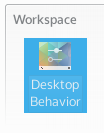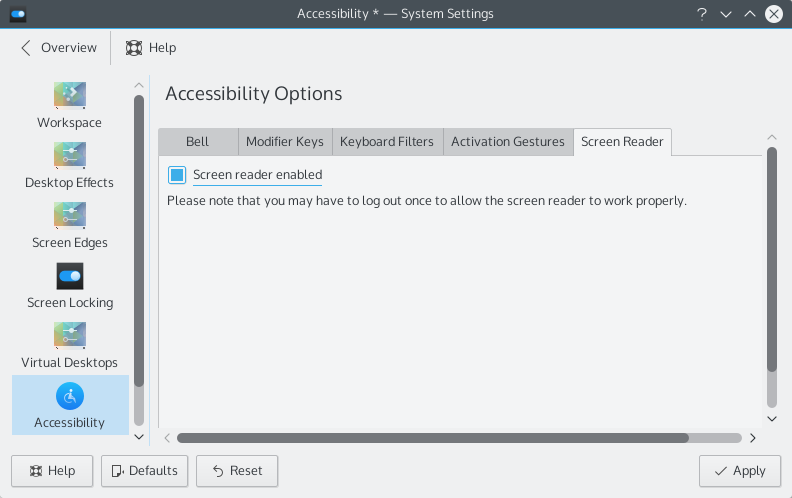The accessibility BoF at Akademy this year consisted mainly of Alex Merry and me looking at what needs to be done to get Orca working with Plasma Next. While things are far from perfect and sighted assistance is probably still required, there is slow but steady improvement.
Assuming you have a recent release of Plasma Next (5.3 and up), testing is quite easy. It boils down to installing Orca (in some distributions gnome-orca) and clicking a checkbox in System Settings:
- make sure Orca is installed and sound from speech dispatcher works
- when installing Orca, speech-dispatcher should come along. Test it with “spd-say hello” in a terminal. Make sure to have some text to speech synthesizer installed (Arch for example doesn’t seem to give you one by default…), get espeak since it’s easy and fast.
- enter System Settings, find “Desktop Behavior” -> “Accessibility” and the last tab will be “Screen Reader”. Currently it only contains a check box to activate the screen reader. It seems like things are not working out of the box as much as I’d like them to (help investigating why not much appreciated), so logging out of the session will be required.
- restart your desktop session.
You will be greated by Orca speaking Gnome and Qt 5 based applications (including Plasma). For Qt 4 based applications, get qt-at-spi and have QT_ACCESSIBILITY=1 in your environment (or even better, port them to Qt 5).
For Plasma itself, make sure to use the traditional menu, and check that the menu has a keyboard shortcut associated (alt-f1).
When pressing that shortcut, the menu should open and be read when navigating the menu with the arrow keys. The lock-screen mostly works, but many other things need a bit of polish when it comes to being able to control them with the keyboard only and have them read properly.
I hope this is enough to get someone started to poke at things. Especially for Qt Quick based applications, it’s often very easy to fix accessibility bugs, by adding the Accessible attached property to give some context.
Consider helping triaging, organizing testing and fixing pressing issues when it comes to accessibility. I think KDE can become usable for a new audience in one or two releases. I would love to see this happen and I’m quite exited about it, but I know I won’t find the time to get it done by myself.

